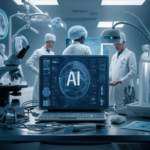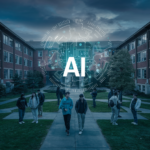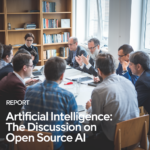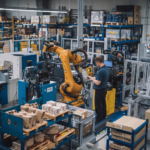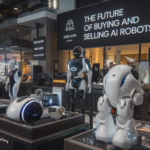The Doomsday Clock, first introduced in 1947 by the Bulletin of the Atomic Scientists, is more than just a clock—it’s a powerful symbol that reflects how close we are to catastrophic global destruction. The closer its hands are to midnight, the greater the danger we face as a species. Traditionally, experts carefully analyze global threats like nuclear risks, climate change, and emerging technologies to decide whether the clock should move closer to or further from midnight. But now, with Artificial Intelligence (AI) becoming more advanced, it’s worth asking: Could AI play a role in bringing us closer to or helping us avert the Doomsday Clock’s midnight hour? As AI grows in influence, the question becomes whether it can assess our global threats, but whether it could be part of those threats pushing us closer to the brink.
The Role of AI in Analyzing Global Threats
AI excels at processing vast amounts of data quickly and identifying patterns that may not be immediately apparent to human analysts. In theory, AI could be programmed to analyze global events, trends, and risks—such as geopolitical tensions, environmental changes, and technological advancements—and provide a recommendation for where the Doomsday Clock should be set. AI systems could continuously monitor data from various sources, including news reports, scientific studies, and social media, to provide a real-time assessment of global risks.
Advantages of Using AI for the Doomsday Clock
1. Data-Driven Analysis: AI can process and analyze large datasets far more quickly and efficiently than humans. By incorporating data from diverse sources, AI could provide a more comprehensive picture of global threats.
2. Unbiased Decision-Making: Unlike humans, AI lacks personal biases, which could lead to more objective assessments of risk factors. This could be particularly useful in situations where political or emotional considerations might otherwise influence the clock’s setting.
3. Predictive Capabilities: AI has the potential to predict emerging threats before they become fully realized. By identifying patterns and correlations in data, AI could foresee developments that might not be immediately obvious to human analysts, allowing for more proactive adjustments to the Doomsday Clock.
Challenges and Ethical Considerations
Despite these advantages, several challenges and ethical considerations must be addressed before AI can be used to set the Doomsday Clock.
1. Transparency and Accountability: AI algorithms are often complex and difficult to interpret, leading to concerns about transparency. If AI were to influence the setting of the Doomsday Clock, it would be crucial to ensure that the decision-making process is transparent and that accountability for decisions remains with human experts.
2. Bias in AI Models: While AI can theoretically be unbiased, in practice, it is only as unbiased as the data it is trained on. If the training data contains biases, the AI’s analysis could reflect those biases, potentially leading to flawed assessments of global risks.
3. Over-Reliance on Technology: There is a risk that relying too heavily on AI could lead to a reduction in human judgment and critical thinking. While AI can provide valuable insights, it should complement, rather than replace, the expertise and deliberation of human analysts.
4. Ethical Implications: The idea of allowing AI to influence decisions about humanity’s survival raises significant ethical questions. Who would be responsible if AI’s recommendations were later found to be flawed or dangerous? How would the public perceive decisions influenced by a machine rather than human experts?
While AI offers powerful tools for analyzing global threats and could potentially contribute valuable insights to the setting of the Doomsday Clock, it is unlikely that AI will fully replace human judgment in this process anytime soon. The Doomsday Clock is not just a data-driven measure; it is also a symbolic and ethical statement about the state of the world. As such, any role AI might play in determining the Doomsday Clock hour would need to be carefully balanced with human expertise, ethical considerations, and a commitment to transparency and accountability.
The potential for AI to assist in this decision-making process is intriguing, but the ultimate responsibility for setting the clock must remain with the human experts who understand the complexities and nuances of global risk in ways that AI cannot yet fully replicate.
About Editor.
Anne Shultz is a tech writer based in Silicon Valley. She is an AI enthusiast and a devoted dog lover.


